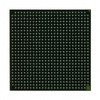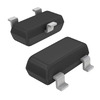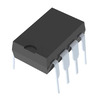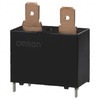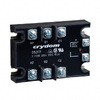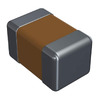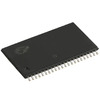Understanding the TL431: A Comprehensive Guide to Precision Shunt Regulators
Catalog
TL431 is a three-terminal controlled precision reference integrated chip with good temperature stability. Because of its high accuracy, low quiescent current and output noise, it is widely used in a variety of electronic devices, such as automatic control, power management and power conversion. In order to help everyone have a better understanding of TL431, this article has compiled relevant information about TL431, come and take a look.
What is TL431 regulator?

TL431 is a 2.50V to 36V adjustable precision shunt regulator jointly produced by Texas Instruments Incorporated (TI) and Motorola Incorporated in the U.S.A. It has the capability of adjustable current output, and is a kind of reference voltage source. TL431 series of products include TL431C, TL431AC, TL431I, TL431AI, TL431M, TL431Y, with 6 models. The TL431 series consists of six models. The internal circuit structure of these models is identical, only a slight difference in individual technical indicators. Because the TL431 has the advantages of small size, precision adjustable reference voltage and large output current, it can be used to make a variety of regulators. Its performance characteristics include continuously adjustable output voltage up to 36V, a wide operating current range of 0.1mA to 100mA, a typical dynamic resistance of 0.22 ohms, and low output spurious. In addition, it has a maximum input voltage of 37V, a maximum operating current of 150mA, an internal reference voltage of 2.5V, and an output voltage range of 2.5V to 30V.
Alternatives and equivalents:
• TL431BILPRE3
Main features of TL431
The main features of TL431 include:
High accuracy: The reference voltage accuracy of the TL431 can reach ±2 percent or higher, making it capable of providing stable and accurate output voltages over a wide range of voltages.
Good dynamic performance: TL431 has a fast dynamic response. It can quickly adjust the output voltage when the power supply load changes, to maintain a stable output of the power supply.
Simplified circuit design: Since the TL431 integrates an error amplifier and a reference voltage source, it can simplify the circuit design, reduce the size of the circuit, and lower the cost of the power supply in the power supply design.
Adjustable output voltage: The output voltage of TL431 can be adjusted by two external resistors, and its adjustment range is from 2.5V to 36V, which is sufficient to meet the needs of different power supply circuits.
TL431 ratings
The current, voltage and wattage ratings of any device show its power requirements, i.e. how much current and voltage is sufficient for its operation. The following table provides the current, power, and voltage ratings of the TL431.
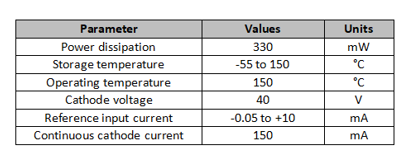
How to measure the quality of TL431?
To measure whether the performance of TL431 is good, we need to identify its pins as reference terminal, anode and cathode. After confirming the pins, we can follow the steps below to measure. First, we adjust the range of the multimeter to the Rxlk block, connect the black pen to the anode, and the red pen to the cathode. What is measured at this time is the forward resistance of TL431. Next, we interchange the test leads, that is, the black pen is connected to the cathode and the red pen is connected to the anode. At this time, infinite reverse resistance should be displayed. This means that when the current flows from the anode to the cathode, the TL431 can be turned on normally; and when the current flows from the cathode to the anode, the TL431 is turned off. Next, we still keep the multimeter range at the Rxlk block, connect the black pen to the reference terminal, and the red pen to the cathode. At this time, there should be no current flowing through it, that is, there is no indication on the meter. Then, when we touch the black pen with one hand and the anode with the other hand, the pointer should swing significantly. When this situation is met, the pin touched by hand is the reference terminal. The final step is to short-circuit the reference terminal and the anode, that is, allow current to flow from the reference terminal and the anode at the same time. In this case, if the black test lead is connected to the cathode and the red test lead is connected to the anode, there will usually be a smaller voltage drop; conversely, if the black test lead is connected to the anode and the red test lead is connected to the cathode, there will generally be a relatively large voltage drop. The principle of this measurement is based on the different voltage drops of TL431 during forward and reverse conduction.
What can it be used for?
• Voltage monitor
• Crowbar circuit
• Shunt regulator
• Precision current limiter
• High-current shunt regulator
• PWM converter with reference
• Precision high-current series regulator
How to distinguish the three pins of TL431?
TL431 has three pins, which are reference terminal, anode and cathode. In order to distinguish these three pins, we can arrange them from left to right with the logo facing us. Specifically, the reference terminal is the pin used to input the reference voltage; the anode is the pin through which current flows; and the cathode is the pin through which current flows out. In practical applications, the cathode is usually connected to the positive pole of the power supply through a current limiting resistor, while the anode is connected to the negative pole of the power supply. Its pin diagram is as follows:

Pin 1 (Reference): This pin sets the voltage rating of the Zener diode.
Pin 2 (Anode): Anode of the equivalent Zener diode
Pin 3 (Cathode): Cathode of the equivalent Zener diode
Structure and working principle of TL431
TL431 is a three-terminal adjustable shunt regulator with excellent stability. It is often used as an adjustable voltage reference. Its external structure consists of three pins: cathode, anode and reference voltage. The internal structure is as shown in the figure. In most applications of the TL431, the anode is usually connected to ground, and a portion of the cathode current flows through the mirror current source in the lower left corner of the block diagram. The voltage drop generated by this current on the resistor, plus the voltage drop between the base B and emitter E of the transistor, together constitute the reference voltage of 2.5V. The intermediate stage structure of TL431 is equivalent to a differential amplifier circuit, while its output stage adopts a Darlington structure. Therefore, TL431 not only has an internally integrated voltage reference function, but also integrates the function of an operational amplifier circuit.
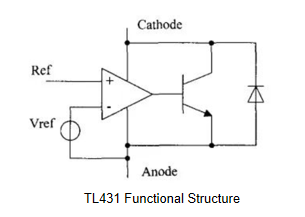
According to its function, the TL431 consists of an internally integrated 2.5V reference voltage, a differential op-amp and an open collector transistor. A simplified diagram of the TL431 is shown below. When the voltage on the reference voltage pin is lower than the internal reference voltage of 2.5V, the op-amp outputs a low level, at which time the triode is in the off state, no current flows in the TL431 (ignoring the tiny leakage current); and when the voltage on the reference voltage pin is higher than the internal reference voltage, the op-amp outputs a high level, the triode conducts and draws current from the cathode, and enters into saturation region rapidly. Only when the voltage on the reference voltage pin is very close to the reference voltage, the triode will work in the amplification area, from the cathode to extract a constant current. The analysis shows that in switching power supply, the original structure which requires discrete reference voltage and op-amp for feedback can be well replaced by TL431.
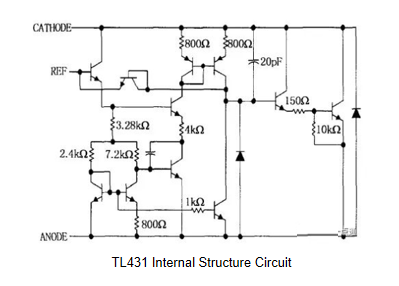
Precautions for TL431 application
When using TL431, we should pay attention to the following aspects:
Pay attention to the current size
The minimum current flowing through the TL431 must be kept above 1mA, otherwise it will lose its voltage regulation performance. At the same time, the maximum current cannot exceed 100mA to avoid damaging the TL431.
Minimum holding current and minimum cathode voltage
Since the internal reference voltage Vref of TL431 is maintained by the cathode current, and this current must be higher than a certain threshold to ensure normal operation, special attention needs to be paid during application: when the output pole of TL431 is in the cut-off state, the cathode still needs maintain a holding current greater than 0.2mA; when the output pole is in saturation, the voltage between the poles must be at least greater than 2.2V to ensure that the TL431 can operate normally.
Pay attention to power consumption
Taking the common TO-92 package as an example, the maximum power consumption of TL431 is 0.7W. In fact, the power consumption P of TL431 in the circuit can be calculated by the formula P=Vo*I, where Vo is the output voltage and I is the current through TL431. Therefore, when the output does not exceed 5V, the TL431 can output a maximum current of 140mA; when the output voltage is 7V, it can only output a current of 10mA due to power consumption limitations. Typically, the power consumption of the TL431 ranges from 0.5W to 1.2W. When it works under high temperature, high voltage or high current conditions, we must pay special attention to ventilation, heat dissipation and the safety of the overall circuit to prevent performance degradation or damage caused by excessive power consumption.
Pay attention to the selection of sampling resistors R1 and R2
When selecting materials and laying out, we should give priority to precision resistors of the same type with small temperature coefficient, low noise, and large power capacity to ensure stability and reliability. According to the formula Vo=2.5*(1+R1/R2), when Vo is a maximum of 36V, we can calculate that the maximum ratio of R1 to R2 is 13.4, that is, the maximum value of R1 should be 13.4 times that of R2. In addition, due to the high open-loop gain and fast response speed of TL431, when the sampling point (that is, the connection point of R1 and R2) is far away from the two poles, the circuit is prone to overshoot self-excitation. Therefore, when designing and using, we need to pay special attention to the location of the sampling point to avoid this situation.
Frequently Asked Questions [FAQ]
1. Is TL431 a Zener diode?
It is a Zener diode, which is programmable. The output voltage ranges from 2.5 Volts to 36 Volts. The output voltage tolerance will be +-4 percent The output current or sink current ranges from 1 mA to 100 mA.
2. What is the difference between TL431 and TLV431?
The TL431 is the original standard shunt voltage reference. The TLV431 is a lower voltage reference option of the TLV but also has some different specifications.
3. What is the function of TL431?
The TL431 in open-loop configuration is often used in as a voltage comparator, undervoltage monitor, overvoltage monitor, window voltage detector and many other type of uses. The TL431 is a shunt voltage reference commonly used for these applications.
4. What is the equivalent of a TL431 transistor?
When TL431 is damaged, if there is no replacement of the same model, it can be directly replaced with KA431, μA431, LM431, YL431, S431, etc. TL431 suffix letters indicate product level and operating temperature range.
5. What are the characteristics of TL431?
The TL431 and TL432 devices are three-terminal adjustable shunt regulators, with specified thermal stability over applicable automotive, commercial, and military temperature ranges. The output voltage can be set to any value between Vref (approximately 2.5 V) and 36 V, with two external resistors.
About us
ALLELCO LIMITED
Read more
Quick inquiry
Please send an inquiry, we will respond immediately.
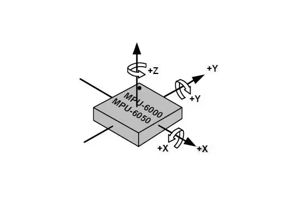
MPU-6050 in Action: Practical Guide to Setup, Configuration, and Noise Management
on September 3th

Learn about the SY8088AAC: A High-Efficiency Synchronous Regulator for Modern Electronics
on September 3th
Popular Posts
-

What is GND in the circuit?
on January 1th 3078
-

RJ-45 Connector Guide: RJ-45 Connector Color Codes, Wiring Schemes, R-J45 Applications, RJ-45 Datasheets
on January 1th 2657
-

Fiber Connector Types: SC Vs LC And LC Vs MTP
on January 1th 2173
-

Understanding Power Supply Voltages in Electronics VCC, VDD, VEE, VSS, and GND
on November 14th 2171
-

Comparison Between DB9 and RS232
on January 1th 1794
-

What Is An LR44 Battery?
Electricity, that ubiquitous force, quietly permeates every aspect of our daily lives, from trivial gadgets to life-threatening medical equipment, it plays a silent role. However, truly grasping this energy, especially how to store and efficiently output it, is no easy task. It is against this background that this article will focus on a type of coin cell battery that may seem insignificant on the...on January 1th 1766
-

Understanding the Fundamentals:Inductance Resistance, andCapacitance
In the intricate dance of electrical engineering, a trio of fundamental elements takes center stage: inductance, resistance, and capacitance. Each bears unique traits that dictate the dynamic rhythms of electronic circuits. Here, we embark on a journey to decipher the complexities of these components, to uncover their distinct roles and practical uses within the vast electrical orchestra. Inductan...on January 1th 1723
-

CR2430 Battery Comprehensive Guide: Specifications, Applications and Comparison to CR2032 Batteries
What is CR2430 battery ?Benefits of CR2430 BatteriesNormCR2430 Battery ApplicationsCR2430 EquivalentCR2430 VS CR2032Battery CR2430 SizeWhat to look for when buying the CR2430 and equivalentsData Sheet PDFFrequently Asked Questions Batteries are the heart of small electronic devices. Among the many types available, coin cells play a crucial role, commonly found in calculators, remote controls, and ...on January 1th 1664
-

What Is RF and Why Do We Use It?
Radio Frequency (RF) technology is a key part of modern wireless communication, enabling data transmission over long distances without physical connections. This article delves into the basics of RF, explaining how electromagnetic radiation (EMR) makes RF communication possible. We will explore the principles of EMR, the creation and control of RF signals, and their wide-ranging uses. The article ...on January 1th 1656
-

Comprehensive guide to hFE in transistors
Transistors are crucial components in modern electronic devices, enabling signal amplification and control. This article delves into the knowledge surrounding hFE, including how to select a transistor's hFE value, how to find hFE, and the gain of different types of transistors. Through our exploration of hFE, we gain a deeper understanding of how transistors work and their role in electronic circu...on November 14th 1610













